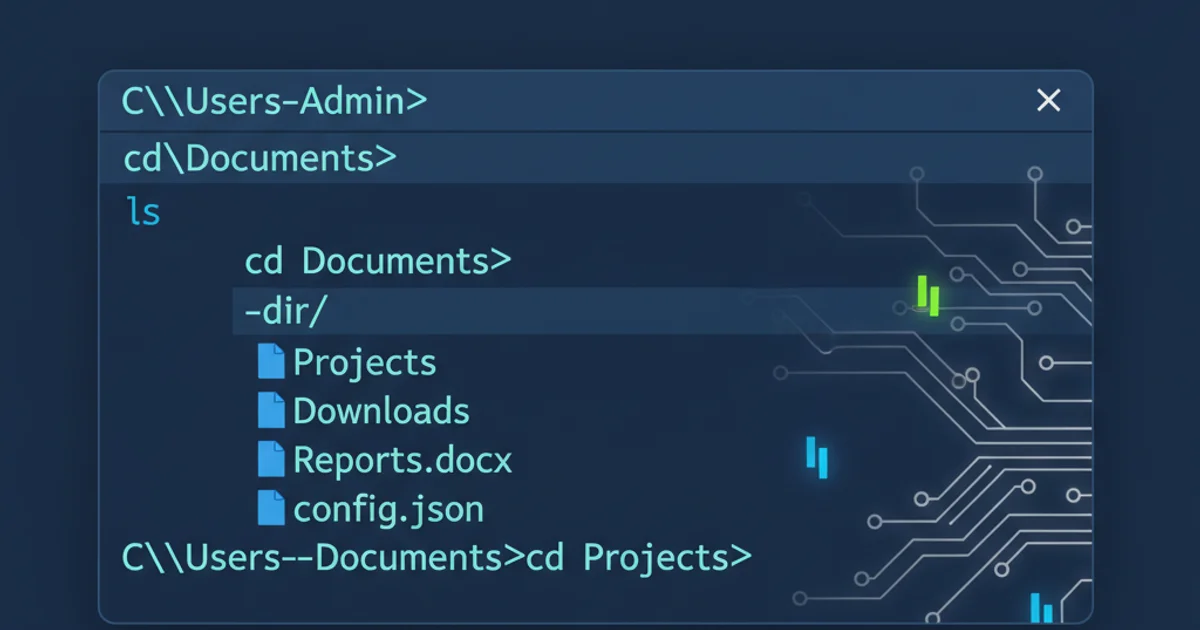Need to navigate to a folder in command prompt
Categories:
Navigating Directories in Windows Command Prompt (CMD)

Learn the essential commands and techniques to efficiently change directories and access files within the Windows Command Prompt environment.
The Windows Command Prompt (CMD) is a powerful tool for interacting with your operating system directly. One of the most fundamental operations you'll perform in CMD is navigating through your file system. Whether you need to access a specific project folder, run an executable, or manage files, understanding how to change directories is crucial. This article will guide you through the primary commands and best practices for directory navigation in CMD.
Understanding the Current Directory
When you open Command Prompt, it typically starts in your user profile directory (e.g., C:\Users\YourUsername). This is your 'current working directory'. Any commands you execute that refer to files or folders without a full path will assume they are located within this current directory. Knowing your current location is the first step to effective navigation.
cd
Display the current working directory.
Changing Directories with cd
The cd command (short for 'change directory') is your primary tool for moving between folders. It allows you to navigate up, down, or directly to any specified path in your file system. Understanding its various uses is key to efficient command-line work.
flowchart TD
A[Start CMD] --> B{Current Directory?}
B --> C[Use 'cd' to display]
C --> D{Navigate Up?}
D -->|Yes| E["cd .."]
D -->|No| F{Navigate Down?}
F -->|Yes| G["cd FolderName"]
F -->|No| H{Navigate to Specific Path?}
H -->|Yes| I["cd /d C:\Path\To\Folder"]
H -->|No| J[End Navigation]Flowchart of common directory navigation scenarios in CMD.
Common Navigation Scenarios
Let's explore the most frequent ways you'll use the cd command to move around your file system.
1. Navigate Up One Level
To move from your current directory to its parent directory, use cd .. (two dots). This is one of the most common navigation commands.
2. Navigate Down to a Subfolder
To enter a subfolder within your current directory, type cd followed by the subfolder's name. For example, if you are in C:\Users\YourUsername and want to go to Documents, you would type cd Documents.
3. Navigate to a Specific Path
To jump directly to any folder, regardless of your current location, provide the full path. If the path is on a different drive, you must use the /d switch. For example, cd /d D:\Projects\MyProject.
4. Navigate to the Root of the Current Drive
To quickly go to the root directory of your current drive (e.g., C:\), simply type cd \.
cd ..
cd MyFolder
cd /d C:\Program Files\MyApplication
cd \
Examples of cd command usage for different navigation scenarios.
cd "Program Files" or cd "My Documents".